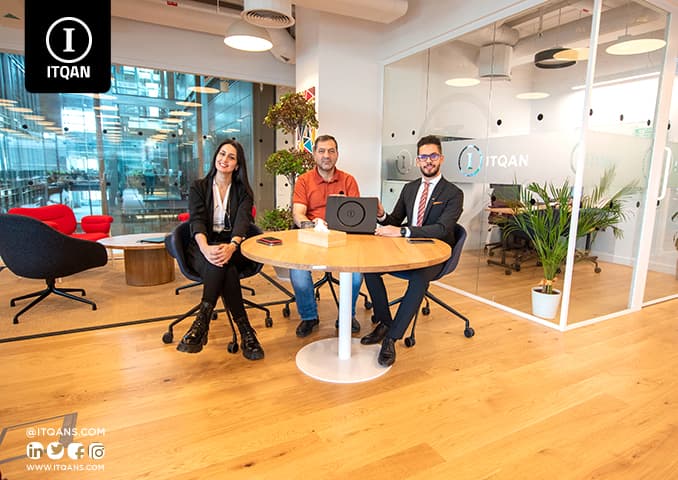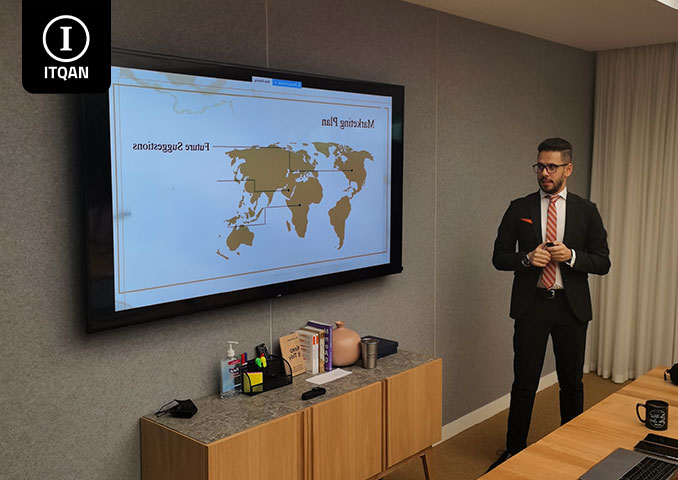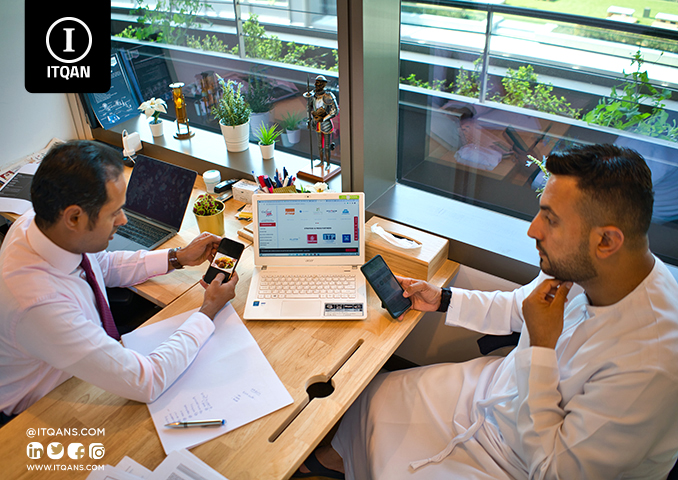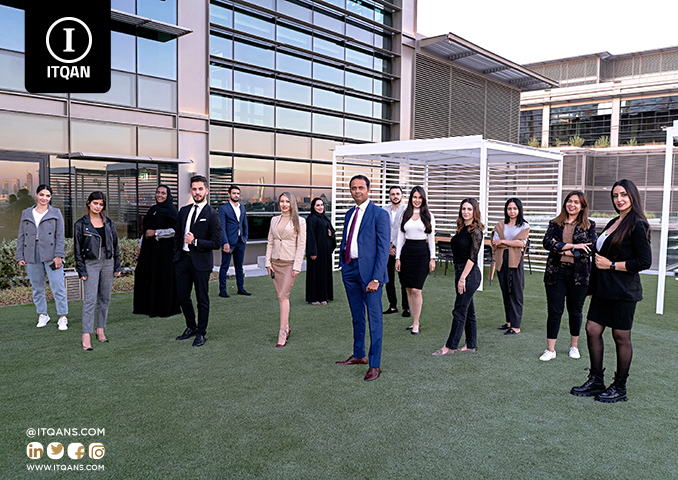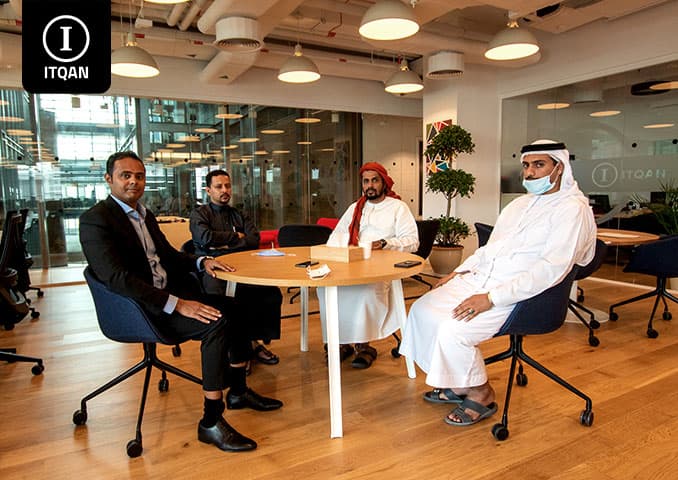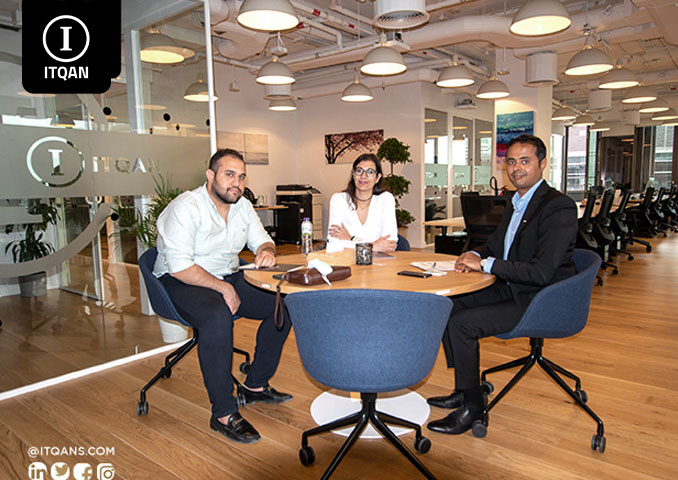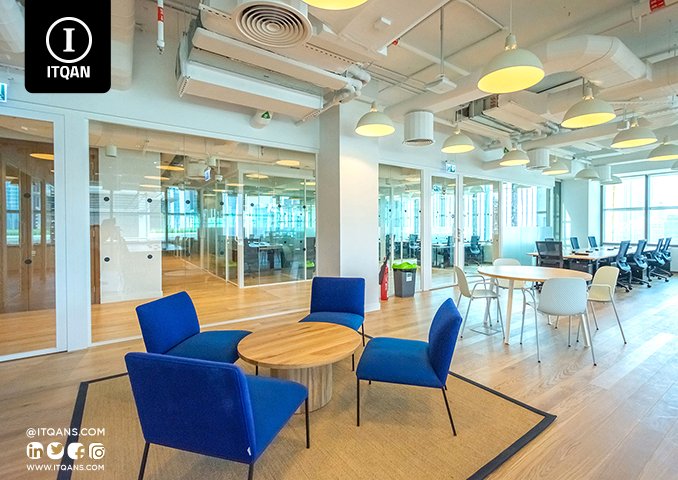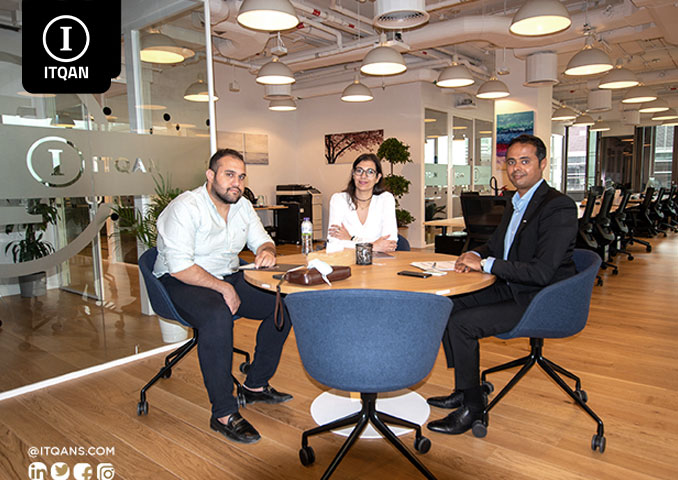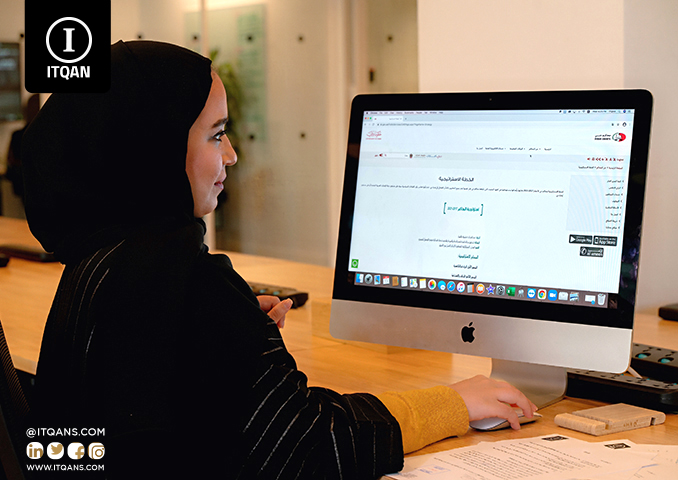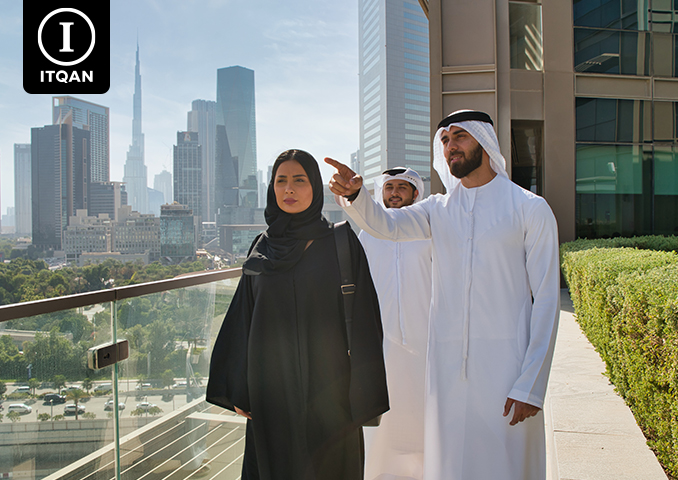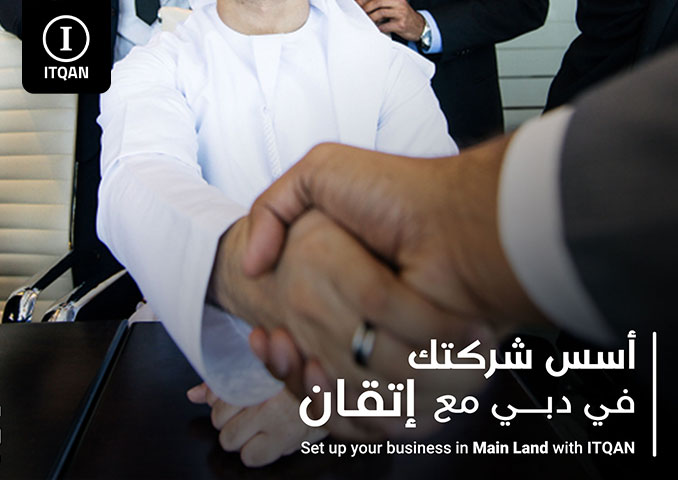Ways to merge investment companies in the Emirates When it comes to mergers and acquisitions in the Emirates, corporate mergers are considered a vital strategy for investment companies to achieve growth and strengthen their position in the local and global market. The UAE is a major attraction for international investments thanks to its thriving economic environment and business-friendly legislation, making it an ideal home for mergers and acquisitions.
Methods of merging investment companies in the Emirates represent a strategic challenge that requires careful planning and elaborate implementation to ensure success and optimal benefit for the parties involved. The methods used in corporate mergers in the UAE depend on several factors, including the commercial strategy of the two merging companies, their future strategic objectives, and local and international legal and regulatory trends.
Through its cooperation with Itqan Company, the UAE provides a suitable environment for implementing mergers efficiently, as the company provides its expertise in the field of consulting to help companies achieve effective integration and manage the challenges that may arise during mergers of investment companies in the UAE . These processes include a comprehensive assessment of the companies involved, value analysis, careful strategic planning for integrating processes and systems, and managing the changing organizational culture.
It is important for investment companies to adopt innovative methods to achieve success in mergers, which contributes to enhancing their competitiveness and achieving strategic advantages that push them towards sustainable growth in a changing market and increasingly adaptive challenges.

The main challenges you may face in the Dubai job market
جدول المحتوى
TogglePractical steps to evaluate and estimate the value of the merged companies
The process of evaluating and estimating the value of the combined companies is an essential and vital step in mergers and acquisitions. This evaluation aims to determine the financial value of each of the companies involved in the merger, and to determine whether the deal will be financially viable for the parties involved. This process includes a set of methodological and analytical steps that must be followed carefully to ensure transparency and accuracy of financial estimates. Practical steps to evaluate and estimate the value of the merged companies
- Asset and Liability Analysis: A detailed report is provided on all assets and liabilities of each of the merging companies. This includes careful analysis of intangible assets such as trademarks, patents and financial technologies.
- Profit and Loss Analysis: The valuation requires extensive analysis of the financial profits and losses of each business, including an assessment of expected future financial returns and expected overhead costs.
- Market and competition analysis: The combined company’s market and potential competitors are studied, identifying competitive positions and potential challenges that the combined company may face in the future.
- Evaluating fair and market value: This analysis involves using a variety of methods to evaluate value, such as the redemption valuation method and determining the market value of the relevant shares in the company.
- Verification of the financial model: The financial model used to determine value must be verified, with the numbers and assumptions used in the evaluation reviewed to ensure their accuracy and reliability.
- Submitting the final report: Based on the previous steps, a final report is prepared and submitted that includes assessments, potential financial risks, and necessary recommendations to the parties concerned with the merger.
The process of evaluating and estimating the value of the merged companies represents a critical step for the success of any merger. These steps must be done carefully and under the supervision of qualified financial professionals to ensure an accurate and objective assessment that contributes to achieving the financial and strategic objectives of the companies concerned.
Methods of merging investment companies in the Emirates
The merger of investment companies in the UAE can be an effective way to achieve growth and expansion, as well as to enhance competitiveness in the market. There are several methods for the merger process that companies in the UAE can use, which include:
Merger
In this type of merger, two or more companies combine to form one new entity. Assets, liabilities and operational resources are combined, and the new company has greater market capabilities. This type of merger requires full agreement between the parties involved, and includes changes in the administrative and legal structure.
Acquisition
An acquisition is the process of one company purchasing another completely, in which the acquiring company takes full control of the target company. An acquisition may involve a cash payment, an exchange of shares, or both. After the acquisition, the target company remains in existence but under the management of the acquiring company.
Strategic Alliance
Firms can enter into strategic alliances to achieve common goals without fully integrating. These alliances include cooperation in specific areas such as research and development, marketing, or product distribution. The alliance does not result in a change in corporate ownership, but it enhances cooperation between the parties.
Joint Venture
In this model, two or more companies establish a new entity that is owned and operated by all parties involved. Co-investment can be useful for entering new markets or developing new products. Profits and losses are shared between the partners based on their shares in the project.
Reverse Merger
In a reverse merger, a private company merges with an existing public company, allowing the private company to enter the public markets without having to go through an initial public offering (IPO). This method can be faster and less expensive than a public offering.
Gradual Acquisition
Instead of purchasing an entire company at once, the acquiring company can gradually acquire stakes in the target company until it achieves full control. This method helps reduce risks and achieve gradual integration.
Restructuring
Restructuring involves reorganizing a company by merging certain business units or dividing the company into smaller entities. This move may be part of a larger strategy that includes a merger or acquisition.
Investing in the Emirates
Investing in the UAE offers wide and diverse opportunities in a range of dynamic sectors that reflect the country’s modern economic trends. The UAE is considered an attractive center for investment thanks to its stable economic environment and developed infrastructure. From real estate and infrastructure to renewable energy, technology and innovation, the UAE offers important opportunities for investors in areas such as real estate project development, clean energies, and advanced digital solutions. The tourism and hospitality sector, in addition to education and health care, are also prominent areas that attract investments. The UAE’s strategic location on the world map enhances investment opportunities in the maritime and logistics industries, making it an ideal destination for investment in various fields. Thanks to its progressive economic policies, the UAE is an ideal environment for developing projects and achieving success in regional and global markets.

Investing in the Emirates
Investment opportunities in the Emirates
Investment opportunities in the UAE are diverse and wide, and include several economic sectors that reflect the country’s diversity and economic dynamism. Here are some of the key investment opportunities in the UAE:
- Real estate and infrastructure: Real estate is one of the most prominent sectors that attract investments in the Emirates, especially in Dubai and Abu Dhabi. This includes investment in commercial and residential real estate, and mega infrastructure projects such as airports and ports.
- Renewable energy: The UAE seeks to diversify its energy sources and invest in renewable energy such as solar and wind energy. This sector offers great opportunities for companies working in the fields of engineering, construction and clean technology.
- Technology and Innovation: The technology sector in the UAE is witnessing rapid growth, with the development of smart cities and the adoption of artificial intelligence and Internet of Things technologies. This opens the door to investments in technological innovation and development of digital solutions.
- Tourism and Hospitality: Tourism is considered one of the most important pillars of the UAE’s economy, with luxury hotel projects, restaurants, and tourist resorts attracting millions of tourists annually.
- Education and training: The educational and training sector contributes to the development of local and regional human resources, making it an important area for investment in educational, technical and training institutions.
- Light industries and new industries: The UAE encourages the development of innovation industries and new industries that rely on modern technologies such as 3D printing and robotics.
- Maritime and logistical industries: The UAE’s strategic location on the Gulf coast provides great opportunities for investment in maritime and logistical industries, such as ports, shipping, and warehousing.
- Health and Medical Care: The UAE aims to improve health infrastructure and develop medical services, making the health and medical care sector an important area for investment.
The importance of investing in the Emirates
The United Arab Emirates is among the major investment destinations in the world, as it enjoys a developed and diverse investment environment that attracts capital and investors from around the world. The UAE is considered one of the largest economic and commercial centers in the Middle East, and is known for encouraging innovation and development in various economic sectors. The importance of investing in the Emirates
- Advanced investment environment: The UAE enjoys an advanced investment environment supported by legislation and government policies that encourage business and investments. Companies and investors enjoy full legal protection and transparency in business procedures.
- Political and economic stability: The UAE enjoys political and economic stability that contributes to creating a safe and stable environment for long-term investments. This stability contributes to attracting more investments and promoting sustainable economic growth.
- Advanced Infrastructure: The UAE is investing heavily in developing infrastructure that supports business and investments, which includes modern ports and airports, advanced logistics networks, and advanced digital technology.
- Access to regional and global markets: The UAE is a natural gateway to accessing regional and global markets, thanks to its strategic location and implementation of multilateral international agreements, which makes it easier for companies to expand their business and increase growth opportunities.
- Economic diversification and innovation: The UAE encourages economic diversification and innovation by investing in new sectors such as clean technology, renewable energy, and artificial intelligence, which contributes to stimulating innovation and developing sustainable solutions.
In short, investing in the UAE is an ideal investment environment that combines political and economic stability, advanced legislation, and advanced infrastructure, making it a preferred stop for investors seeking to grow and prosper in a diverse and sophisticated international market.
Conditions that must be met to complete the merger successfully
The merger between companies is a complex strategic step that requires careful planning and systematic implementation to ensure its success and achieve the desired goals. This process includes several conditions and requirements that must be met to ensure that the merger is implemented efficiently and effectively, while reducing the financial and operational risks that the companies involved may face. In this article, we will review the basic conditions and requirements necessary to successfully complete the integration process into investments in the Emirates . Conditions and requirements that must be met to successfully complete the merger process
- Comprehensive feasibility study: A detailed feasibility study must be prepared covering all aspects of the operation, including expected benefits, costs, and financial and operational results. The study includes market assessment, gap analysis, and potential growth opportunities after the merger.
- Approval from regulatory authorities: The merger requires obtaining necessary approvals from the relevant regulatory authorities such as the Securities and Commodities Authority (SCA) or other relevant regulatory bodies. Companies must submit all required documents and agree to the terms of the merger.
- Evaluation of Assets and Liabilities: A careful evaluation of the assets and liabilities of each of the merging companies must be made. This includes evaluating the company’s tangible and intangible assets, debts, and liabilities, to ensure fair value is determined for each party.
- Binding agreements and contracts: Clear agreements and contracts must be prepared that define the terms of the merger, including details of shares, financial inclusion, and distribution of assets and liabilities. These agreements specify the rights and obligations of each party after the merger.
- Financial evaluation: The merger requires the preparation of a comprehensive financial evaluation, which includes valuing shares, determining fair value, and analyzing future cash flows. Approved financial models must be used to evaluate the feasibility of the merger.
- Planning for operational integration: A detailed plan for operational integration must be developed that includes the integration of business systems, technological infrastructure, and administrative processes. Human resources must be coordinated and policies and procedures unified to ensure efficient business continuity.
- Communicate with stakeholders: Companies must communicate with all relevant stakeholders, including shareholders, employees, customers, and suppliers. You must provide the necessary information and explain the benefits and challenges associated with the merger to ensure their support and understanding of the move.
- Compliance with local and international laws and regulations: You must ensure that the merger process complies with all local and international laws and regulations, including laws related to competition, protection of intellectual property rights, and labor laws.
Achieving success in the merger process requires adherence to all the conditions and requirements mentioned, in addition to good coordination and continuous planning. By following these steps and paying attention to the details, companies can achieve the desired integration and make the most of the growth and innovation opportunities provided by the merger.
Learn about the ways of merging investment companies in the Emirates
At the conclusion of the comprehensive overview of corporate mergers in the Emirates , these operations remain a vital and pivotal experience for investment companies seeking to strengthen their positions and achieve sustainable growth. The UAE is an ideal environment for such operations thanks to its open economic policies and supportive regulatory laws that contribute to attracting international investments.
Itqan Company, through its specialization in the field of consulting, represents an essential strategic partner for companies wishing to successfully manage and implement mergers. The company offers its expertise in providing the strategic, technological and financial support necessary to ensure smooth and effective integration of operations. Its services also contribute to managing potential challenges and maintaining business stability during the merger period, ensuring continuity of performance and achieving the expected benefits from these operations.
Certainly, the investment strategies and future plans of investment companies in the UAE remain linked to their ability to successfully implement mergers, which requires careful planning and effective cooperation with strategic partners such as Itqan. By utilizing its expertise and deep knowledge of the local market, Itqan contributes to building a bright future for investment companies, which enhances its role as a leading consulting company in supporting economic growth and sustainable development in the Emirates.
Frequently asked questions about methods of merging investment companies in the Emirates
What are the legal and regulatory procedures necessary for the merger of investment companies?
Investment companies must submit an application to the Securities and Commodities Regulatory Authority (SCA) in the emirate with jurisdiction, which will review the application and attached documents and provide approval if the companies comply with the terms and legal requirements.
What are the regulatory authorities concerned with approving the merger of investment companies in the Emirates?
The Federal Financial Regulatory Authority (ESCA) is the main body that regulates and monitors financial markets and investment companies in the Emirates.
What are the conditions and requirements that must be met to successfully complete the merger process?
The companies concerned must submit a financial and economic feasibility study showing the benefits of the merger for the two companies and for the markets. The required capital and financial reporting requirements must also be complied with.
What is the financial and tax impact of the merger of investment companies?
There may be tax consequences to mergers, and it is best to consult a local tax advisor to advise on the financial and tax aspects of the merger.
Are there international or local agreements that affect the merger process in the UAE?
The UAE is a member of the World Trade Organization (WTO) and adheres to international agreements, as well as local laws regulating foreign and domestic investments.
What are the practical steps to evaluate and estimate the value of the merged companies?
This includes a comprehensive assessment of assets and liabilities and determining a fair market value for the companies involved, taking into account external valuations to ensure transparency and accuracy.


